Vinyl’s Modern Revival: Choosing the Right Turntable for Beginners
With so many options out there, how do you pick the right one without feeling overwhelmed or ending up disappointed?

- New or Retro?
- Belt Drive or Direct Drive?
- Automatic or Manual Operation
- The Risk of Vintage Turntables with Auto-Stop
- Bluetooth Turntables
- Why You Should Avoid Portable “Suitcase” Turntables
- All-in-One Turntables
- Let’s Talk About the Phono Pre-Amplification
- So, How to Choose a Good Turntable?
- How to Properly Connect Your Turntable to a Speaker System
- Option 1: Bluetooth Connection
- Option 2: Built-In Phono Preamp, External Amplifier, and Passive Speakers
- Option 3: Phono Preamp Built into the Amplifier
- Option 4: Turntable, External Phono Preamp, Amplifier, and Passive Speakers
- Option 5: Turntable and Active Speakers with a Built-In or External Phono Preamp
- What Modern Turntables Have Lost Compared to Their 40-Year-Old Counterparts
Vinyl is making a big comeback—no doubt about it. Just a few years ago, vinyl collectors were a niche crowd, barely noticed by big businesses. But now, it seems like everyone wants a piece of the action. Prices for records are climbing (a topic for another day), and every other company—from entertainment giants to up-and-coming startups—is rushing to release their “special” turntable.
With so many options out there, how do you pick the right one without feeling overwhelmed or ending up disappointed? That’s what we’re here to figure out. Step by step, we’ll tackle questions like, “Should I go for a brand-new or retro turntable?”, “Manual or automatic?”, “Do I need a phono preamp?”, and more.
New or Retro?
Some say a retro turntable is the best way to start. The logic goes like this: since turntables were a household staple up until the early ‘90s, there should be plenty of spare parts for repairs if something breaks. Back then, manufacturers churned out turntables in huge volumes, making them easy to replace or fix.
Sounds reasonable, right? Not so fast. Think about it this way: we all know the difference between a high-quality iPhone and a cheap, no-name smartphone that barely makes it out of its home country before breaking down. It’s the same story with turntables from the ‘70s and ‘80s—vinyl’s golden era. Among the millions produced, only a fraction were actually great. Many were low-quality to begin with, and after 50 years, they’ve aged into, well… low-quality antiques.
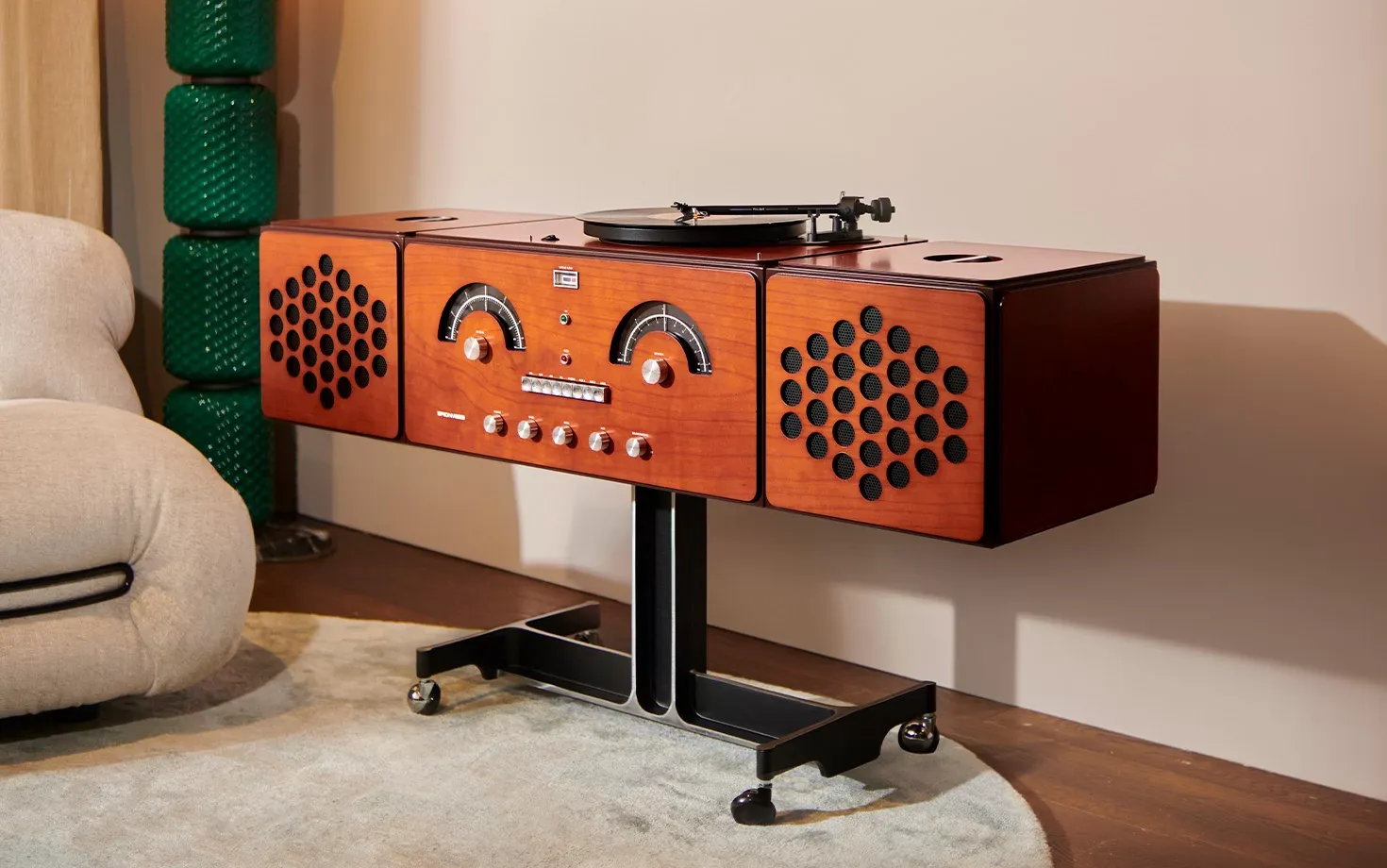
As a beginner, you need something that just works—no fuss, no breakdowns a week after you bring it home.
If you’re a die-hard fan of vintage aesthetics and feel that a “real” vinyl experience must involve an old-school turntable, that’s totally valid. But be prepared to spend a lot of money—seriously, a lot—to get a vintage player in good condition.
Now, imagine this: what if vinyl turns out to be just a passing interest for you? Will you be able to find someone willing to pay you back the hefty sum you shelled out for that classic turntable?
Here’s the hard truth: vintage turntables, even the well-preserved ones, are fighting a losing battle against time. Materials wear out. Physics doesn’t care about nostalgia. And unless you’re ready to tackle costly repairs—or even worse, face unsolvable issues—why start with a problem on your hands?
Let’s circle back to the idea of mass-market turntables from the ‘70s. Back then, there were thousands of manufacturers pumping out players. Today, that number has dwindled to just a few dozen reputable brands. And what happens when competition shrinks? The stakes get higher. These days, no serious manufacturer (well, almost none—there are always exceptions) can afford to release a total dud. It’s just bad business.
So, when a beginner asks, “Should I buy a new or retro turntable?” the answer in today’s market is simple: go with a new one. It’s the smarter, safer choice to start your vinyl journey.
Belt Drive or Direct Drive?
This question has long taken on an almost “religious” status. Both systems have their devoted fans—and their critics.
For example, belt drive enthusiasts often point the finger at direct drive turntables for introducing extra vibrations, since the platter is mounted directly on the motor. On the other hand, critics of belt drive models argue that they can lack precise speed control because the motor’s motion is transmitted to the platter via a rubber belt, which can stretch and wear out over time.
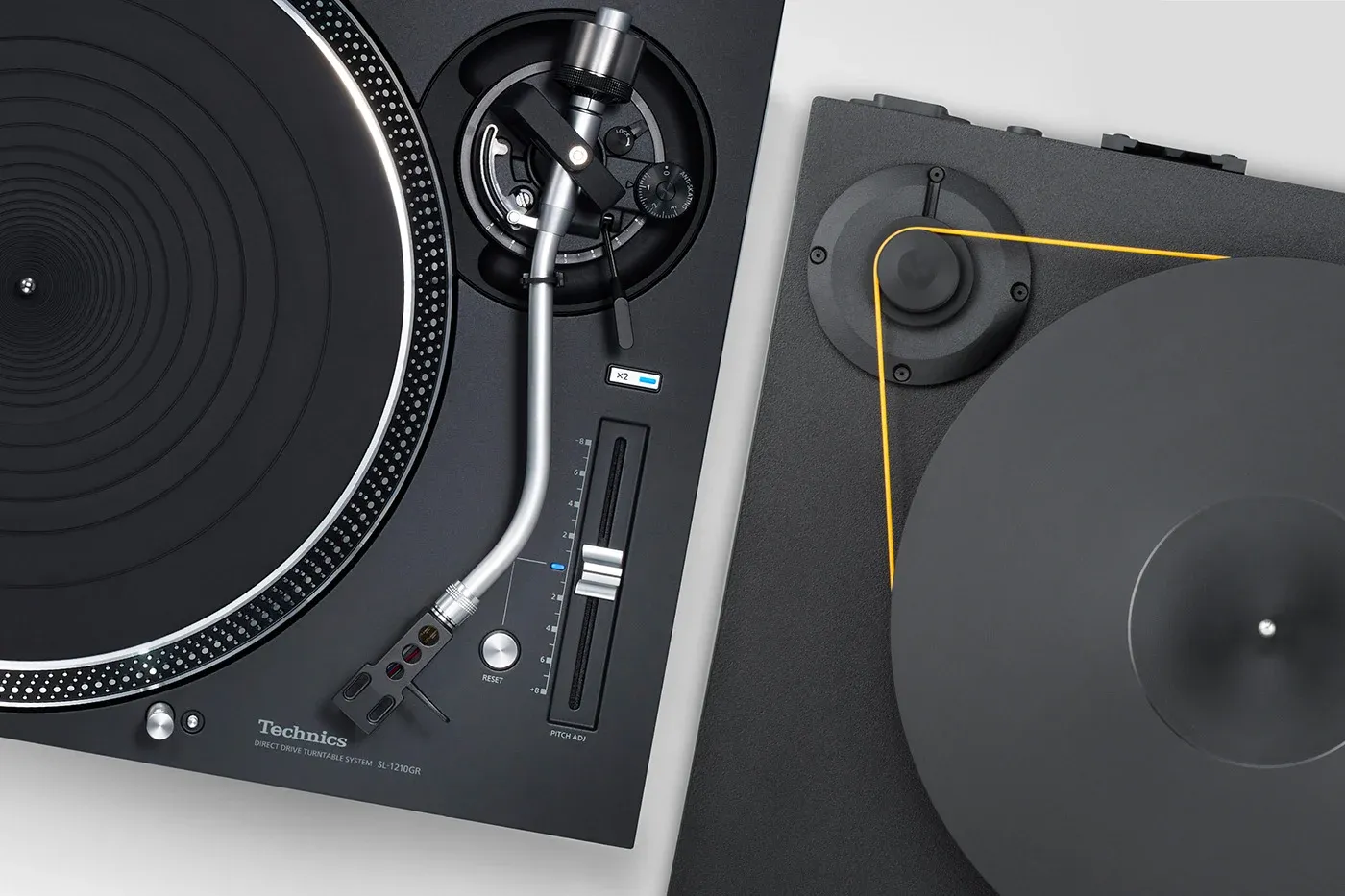
Here’s the thing: in modern, well-made turntables, these issues are virtually non-existent. Whether you go for belt or direct drive, at the entry-level, this detail doesn’t really matter. Sure, hardcore fans from either camp might argue otherwise, but honestly, their objections are often about as valid as claiming you need to massage your audio cables before listening to a record to improve the sound quality.
The takeaway? Don’t sweat this one too much. Choose the system that feels right for you or fits your budget—either way, you’re going to enjoy the music.
Automatic or Manual Operation
It’s hard to say why so many modern turntable manufacturers shy away from including fully automatic playback features. You’d think there’s nothing more convenient than placing your record on the platter, pressing a “Start” button, and letting the turntable handle the rest. Yet here we are, and some even spread the myth that auto-stop mechanisms somehow degrade sound quality.
Of course, the average listener doesn’t just want high-quality sound—they want ease of use, too. That’s why we’ve reached a sort of middle ground in most modern entry- and mid-level turntables: the inclusion of basic auto-stop. Here’s how it works: when the stylus reaches the end of the groove, the record spins for 3–4 extra rotations and then stops. The tonearm doesn’t lift off, nor does it return to the starting position, but at least it doesn’t keep dragging across the vinyl endlessly.

Let’s be clear: for a modern stylus to literally carve through a record, the turntable would have to spin continuously for about two weeks. No one’s likely to leave their turntable unattended for that long, but even an extra hour of wear—why risk it?
Fully automatic turntables are rare among contemporary models, but they do exist.
The Risk of Vintage Turntables with Auto-Stop
One of the most common mistakes is buying a vintage turntable with auto-stop. Here’s why: the auto-stop and auto-return mechanisms are statistically the first features to fail in turntables that are 30–50 years old. And fixing them? Practically impossible.
In some cases, you might be able to revive the turntable by removing the faulty automation altogether. But what do you end up with? Exactly—a worn-out, decades-old turntable that no longer has auto-stop. Was it worth the hassle?
To make matters worse, in some models, the turntable’s systems are so interconnected that a failure in the auto-stop mechanism can render the entire turntable unusable. Permanently. It’s a gamble that most beginners—and even seasoned vinyl enthusiasts—would be wise to avoid.
Bluetooth Turntables
Some turntables feature Bluetooth for wirelessly streaming music to speakers or headphones. While this adds convenience, it sacrifices the analog purity of vinyl. Even high-quality Bluetooth codecs like AptX HD cannot fully replicate the analog experience.
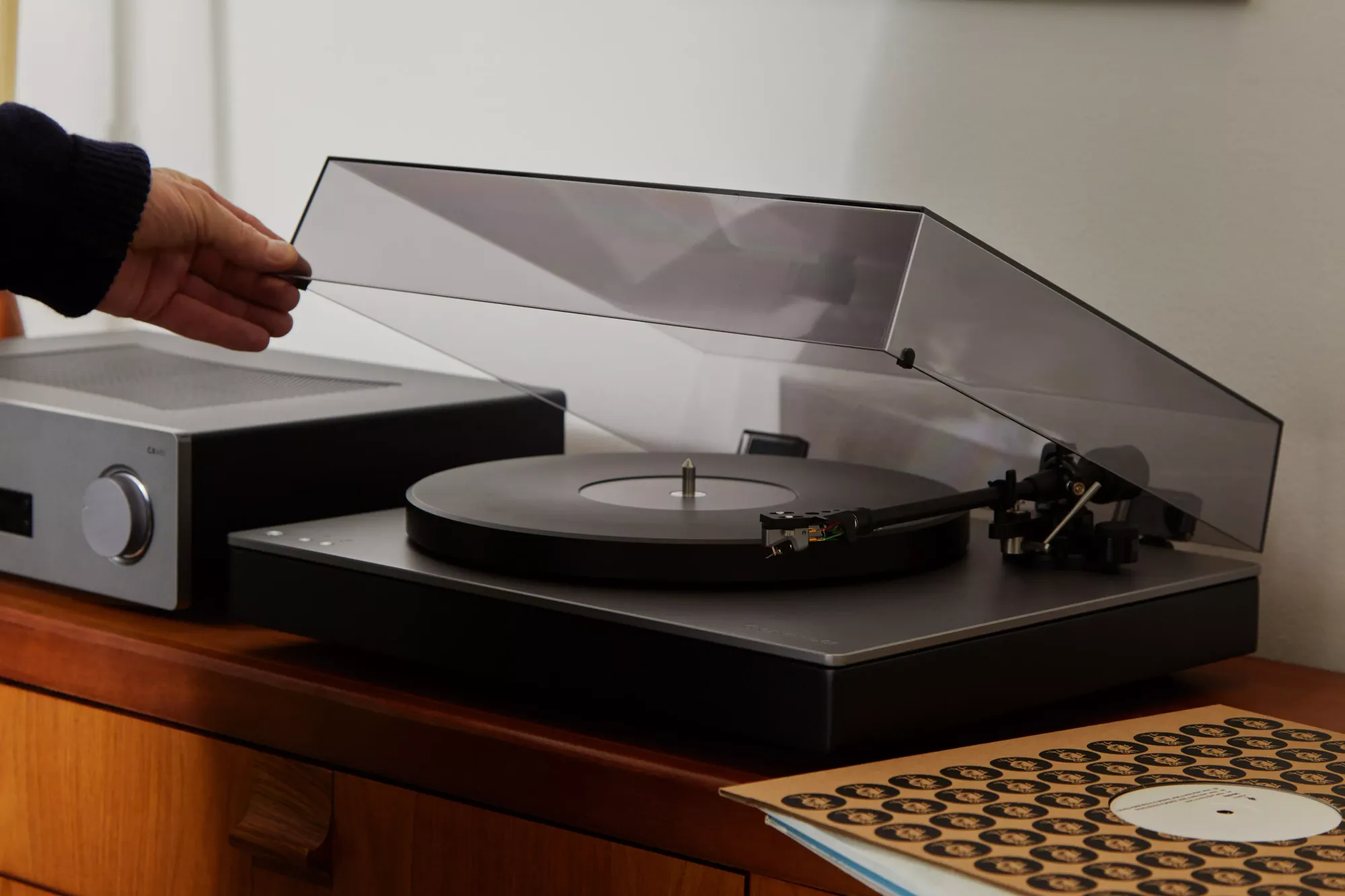
For those seeking a balance between quality and convenience, Bluetooth-enabled setups may be an acceptable compromise.
Why You Should Avoid Portable “Suitcase” Turntables
The mechanics and setup of vinyl turntables (especially advanced models) are intricate topics worthy of their own in-depth articles. For now, let’s focus on two critical factors: tracking force and anti-skating.
Tracking force determines how much downward pressure the stylus exerts on the record. If it’s too light, the stylus will skip and lift off during loud or dynamic sections of a track. If it’s too heavy, the stylus will press so hard that it begins to damage the grooves of the record.
Anti-skating, on the other hand, regulates the lateral force on the stylus—essentially balancing the pressure to prevent it from leaning too heavily to one side. Without proper anti-skating, the imbalance can distort the sound between the left and right channels and, over time, erode the walls of the record grooves.
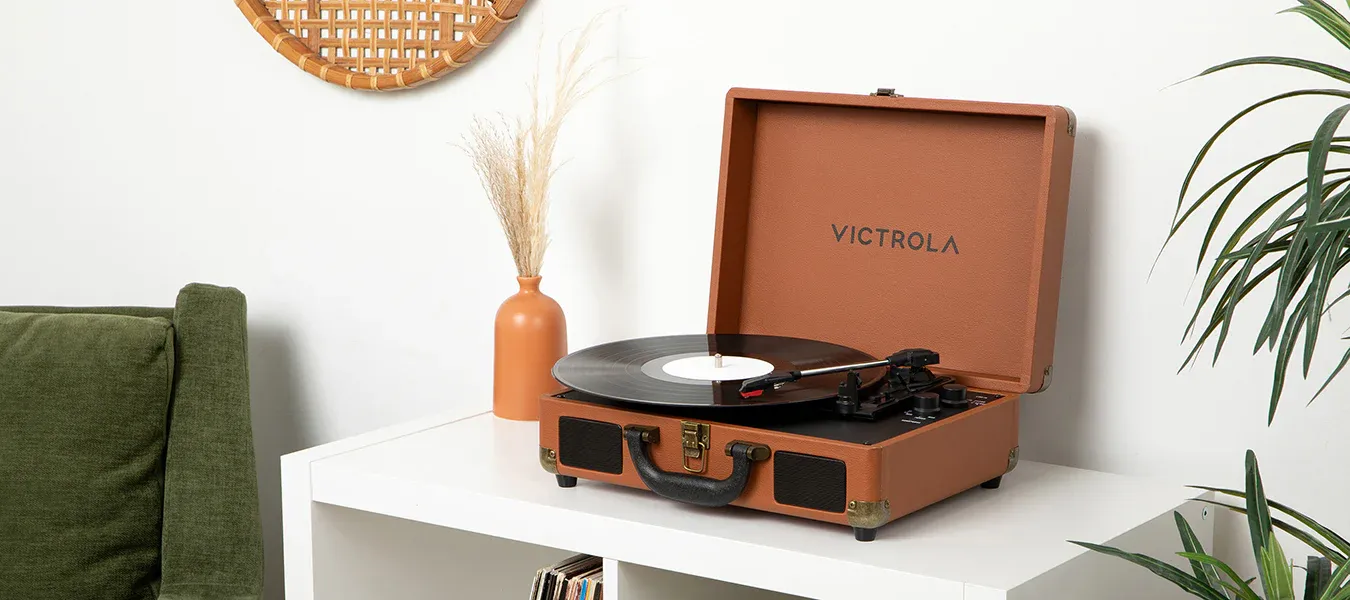
Now, back to those “suitcase” turntables. Manufacturers of portable players like these tend to completely disregard these crucial parameters. They often equip these turntables with overly heavy cartridges and styluses that apply excessive tracking force. The result? Your records could be irreparably damaged after just 2–3 plays.
In short, while these players might look charming or convenient, they’re a fast track to ruining your vinyl collection.
All-in-One Turntables
Recently, the market has seen a resurgence of all-in-one systems that combine a vinyl turntable and a Bluetooth speaker in a single unit. While this might sound convenient, most of these devices are produced by the same companies responsible for those infamous “suitcase turntables” that can wreak havoc on your precious vinyl collection. In other words, exploring this category is often a waste of time.
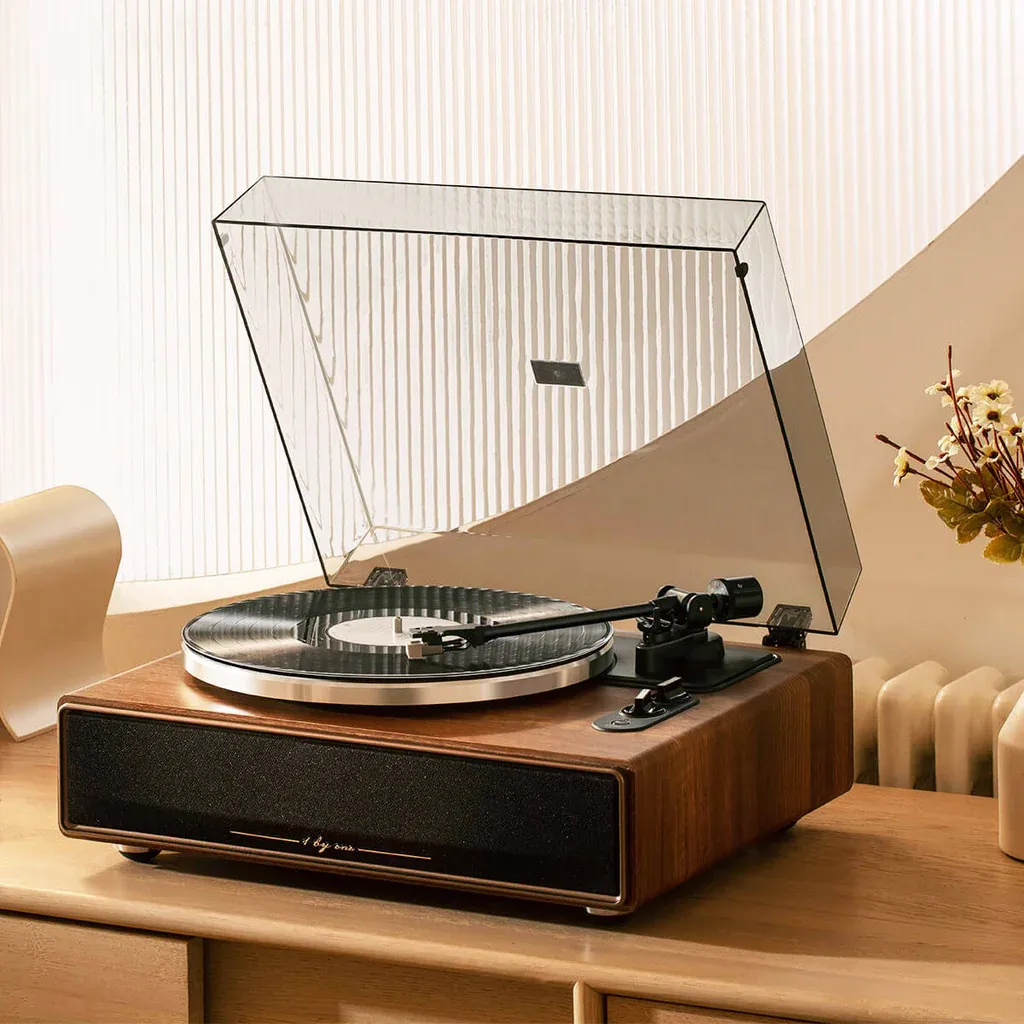
That said, there are some rare gems—products from reputable manufacturers who prioritize quality over gimmicks. These systems can be a good entry point for those who value simplicity without completely compromising on sound quality. But they also cost a fortune!
Let’s Talk About the Phono Pre-Amplification
Here’s the thing about turntables: they can’t send their audio signal directly to an amplifier. Without getting too technical, the signal from a turntable is too weak for the amplifier to process. That’s where phono preamps come in—special devices that boost the turntable’s output to a usable level.
Depending on the design of the turntable, the phono preamp can be either built-in or external. A built-in preamp offers the ultimate plug-and-play experience—just connect your turntable, and you’re good to go. An external preamp, on the other hand, opens the door to customization…and, let’s be honest, some serious spending.
Fortunately, most modern turntables, especially entry-level models, come with a built-in phono preamp that can be turned off. This means you can enjoy the convenience of the built-in option now and, if you decide to upgrade your setup later, simply add an external preamp and flip the “phono/line” switch. Easy and flexible—what’s not to love?
A Bit of Theory
It’s a common misconception that a phono preamp is just a type of preamplifier designed to boost weak signals from the stylus cartridge. While signal amplification is part of its function, phono preamps do more than that.
They also correct the frequency imbalances introduced during the vinyl recording process:
• High Frequencies: These are exaggerated during recording to minimize noise from the vinyl material itself.
• Low Frequencies: These are reduced to prevent the stylus from jumping out of the grooves.
A phono preamp restores these adjustments, ensuring the music is played back with its original tonal balance.
Types of Stylus Cartridges
Modern turntables typically feature one of two stylus cartridge types:
1. Moving Magnet (MM) with output signal ~5 mV.
2. Moving Coil (MC) with output signal ~0.5 mV.
To connect to an amplifier, you need to amplify these signals significantly—sometimes up to 2000 times their original strength. Additionally, cartridges vary in resistance, capacitance, and other specifications that need to be considered.
Why Phono Preamps Are Essential
In 1953, the Recording Industry Association of America (RIAA) standardized the frequency response for recording and playback, initially covering 30 Hz to 15 kHz. Over time, the range expanded, culminating in the RIAA-78 standard, which remains the industry norm.
Phono preamps are designed to meet this standard, ensuring vinyl playback adheres to the required frequency characteristics. They can either be universal, compatible with both MM and MC cartridges, or specialized for one type.
So, How to Choose a Good Turntable?
To avoid mistakes when picking your first turntable, let’s go through the key factors you should consider:
Support for Multiple Speeds
Your turntable should handle at least two playback speeds: 33⅓ and 45 RPM. These are the modern standards and both are essential. While most of your collection will likely consist of 33⅓ RPM records, you’ll inevitably encounter 45 RPM ones too. Don’t worry about 78 RPM unless you’re diving into pre-1940s recordings, which are the domain of hardcore collectors, not beginners.
Adjustable Tracking Force and Anti-Skating
Turntables claiming “factory-calibrated settings” are marketing myths that don’t hold up in practice. For the sake of your vinyl collection’s longevity, make sure your turntable has manual tracking force and anti-skating adjustments. Without these, your records could suffer unnecessary wear, turning your player into a vinyl-damaging machine.
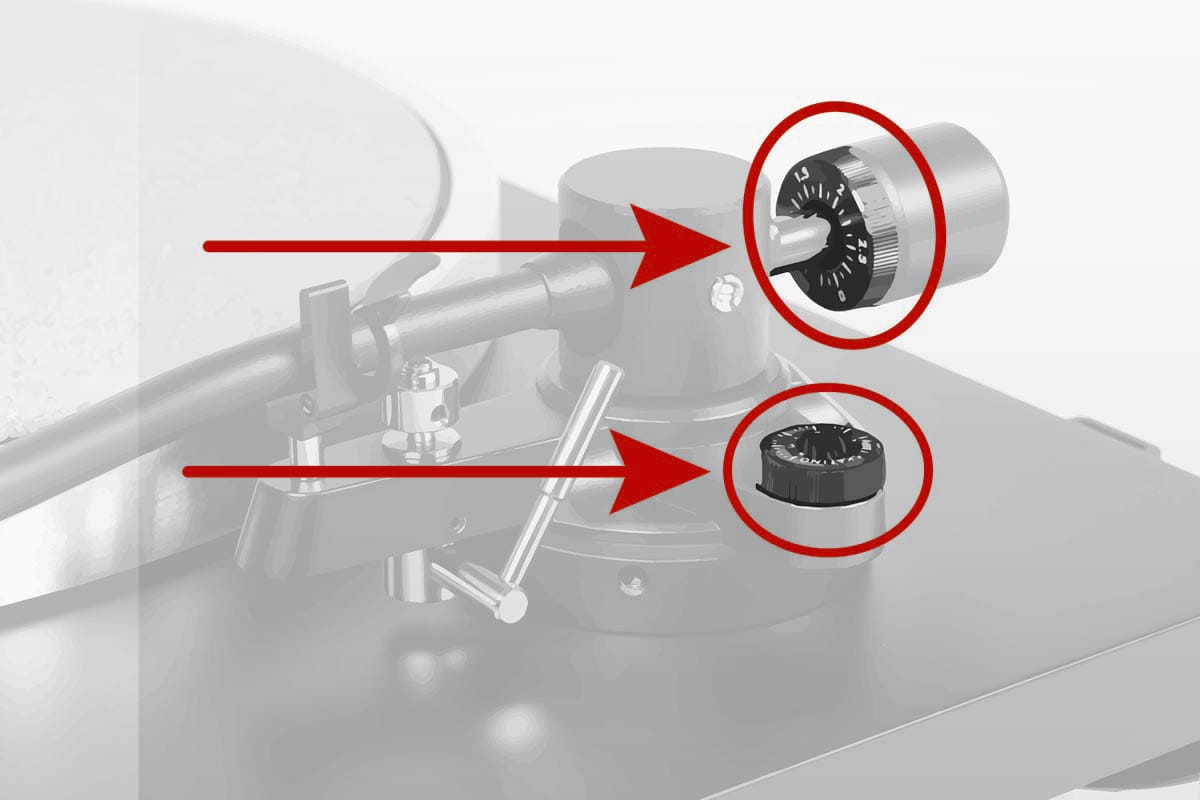
At Least Auto-Stop
While fully automatic turntables would be ideal, many modern manufacturers seem to have forgotten this basic convenience. At the very least, look for a turntable with auto-stop functionality. It’ll save your stylus from unnecessary wear and keep your records from endlessly spinning in silence.
Built-in Phono Preamp
Although external preamps offer better sound quality down the road, a built-in phono preamp is more practical for beginners. It saves you money and keeps your setup simple in the early stages.
Cartridge Upgradeability
A turntable’s sound quality heavily depends on its cartridge, especially whether it uses a moving magnet (MM) or moving coil (MC) system. Make sure your turntable allows for future cartridge upgrades. Instead of replacing your turntable after a few years, you can install a high-quality cartridge and rediscover your records with enhanced audio performance.
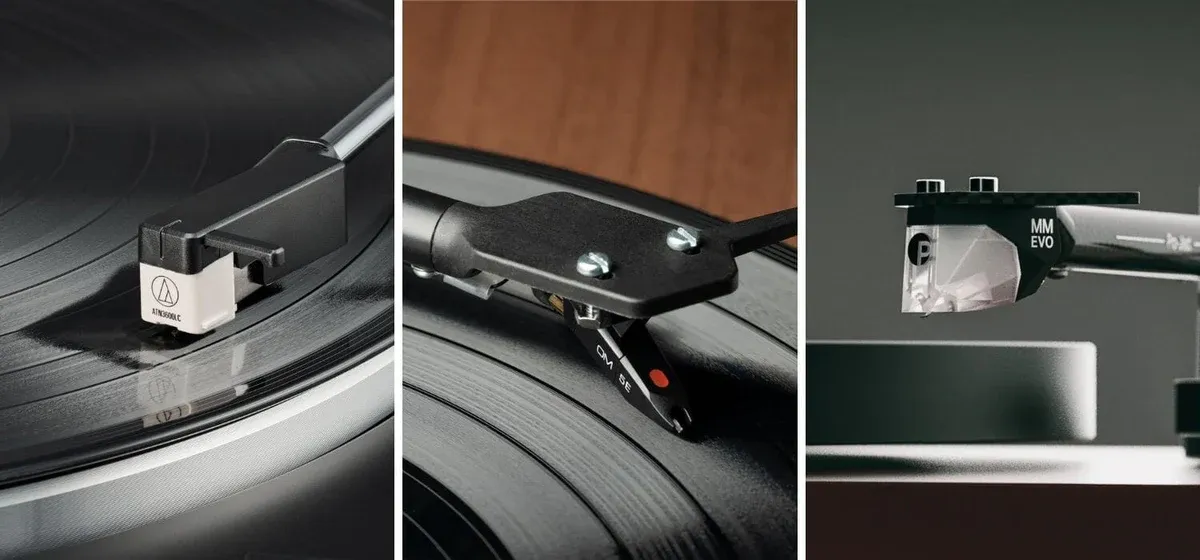
No Built-in Speakers
Avoid turntables with built-in speakers. These tiny speakers won’t do justice to analog sound and can cause vibrations that interfere with playback. Stick to external speakers for a proper vinyl experience.
Proper Turntable Dimensions
The turntable should be large enough that the record doesn’t extend beyond its edges. The only exceptions are portable models like the Sound Burger, but these are meant for on-the-go listening, not as a primary home system.
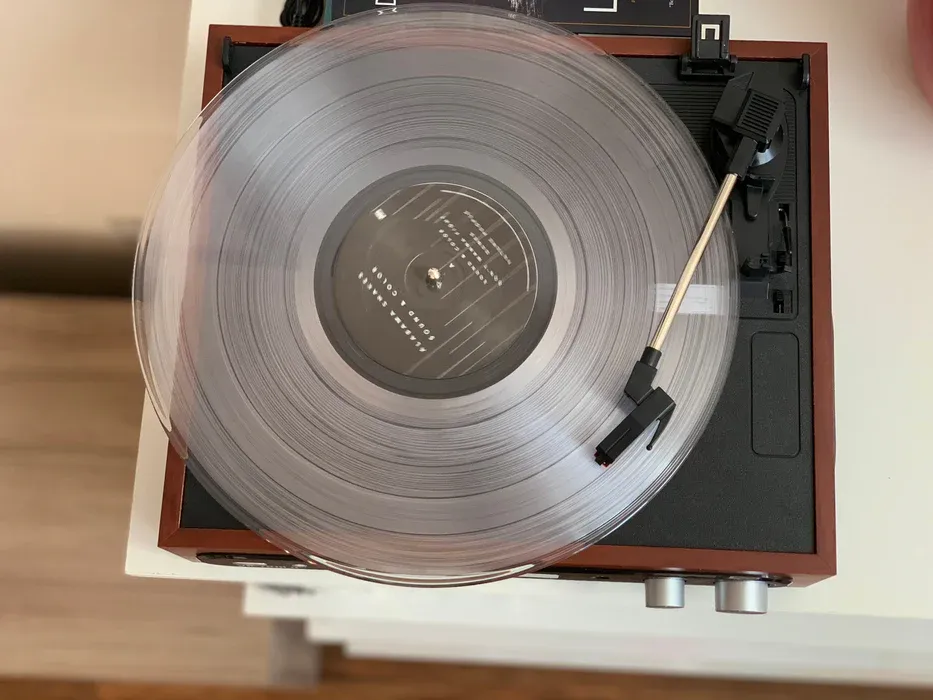
The photo above serves as a clear example of what not to do. A stationary player should perform its intended function without the features found in portable devices.
Bluetooth is a Bonus, Not a Necessity
Bluetooth transmitters can be convenient for listening via wireless headphones, but they come at the expense of sound quality. If your turntable has it, great! If not, it’s not a dealbreaker. Just steer clear of Bluetooth receivers, as they often indicate the presence of built-in speakers, which we’ve already deemed undesirable.
By keeping these factors in mind, you’ll be well-equipped to choose a turntable that fits your needs as a budding vinyl enthusiast. Remember: the right turntable is the one that lets you enjoy your records while keeping them safe for years to come!
How to Properly Connect Your Turntable to a Speaker System
Now that we’ve established the importance of a phono preamp, the next step is figuring out how to connect your turntable to your speaker system. After all, the ultimate goal here is to enjoy your music collection! Let’s look at the main connection methods and their pros and cons.
Option 1: Bluetooth Connection
This is the simplest setup. If your turntable is Bluetooth-enabled, all you need is a Bluetooth speaker. Pair the devices, and you’re ready to go.

However, this method sacrifices the analog sound experience that vinyl enthusiasts cherish. Converting analog stereo output to compressed digital audio and playing it through a mono Bluetooth speaker undermines the unique charm of vinyl. This approach might be fine for a second turntable in your bedroom, but it’s far from ideal for serious listening.
Option 2: Built-In Phono Preamp, External Amplifier, and Passive Speakers
This is one of the most straightforward and cost-effective ways to achieve a fully analog listening experience.

Here’s how it works:
• Your turntable’s built-in phono preamp amplifies and equalizes the signal.
• The amplified signal is then sent to an external amplifier, which drives passive speakers.
This classic setup gives you authentic vinyl sound without unnecessary complexity.
Option 3: Phono Preamp Built into the Amplifier
The only difference from Option 2 is that the phono preamp is part of your amplifier instead of the turntable. This setup is common with vintage amplifiers from the 1990s or even earlier. But also some modern models of amplifiers or receivers are equipped with a phono stage.

If you already own such an amplifier, you can prioritize buying a turntable with a high-quality stylus and cartridge instead of focusing on its built-in preamp.
Option 4: Turntable, External Phono Preamp, Amplifier, and Passive Speakers
This is the most flexible and upgradeable configuration.

Why?
• An external phono preamp allows you to choose a high-quality model tailored to your specific needs.
• Every component can be upgraded independently without negatively impacting the rest of your system.
For example, if you eventually upgrade to an MC cartridge, you can simply replace the preamp instead of rethinking your entire setup. This versatility makes it a favorite among audiophiles.
Option 5: Turntable and Active Speakers with a Built-In or External Phono Preamp
In today’s market, active speakers (those with built-in amplifiers) are a popular alternative to traditional setups.

Here’s what makes this option appealing:
• Active speakers often include a built-in phono preamp, Bluetooth, and other modern features like optical and USB inputs.
• Some models are designed for serious listening, delivering excellent sound quality without needing an external amplifier.
This setup is perfect if you want to save space and streamline your audio system. You can also use the speakers for streaming services via Bluetooth, making it a versatile choice for modern music lovers.
Each of these connection methods caters to different priorities—whether it’s simplicity, sound quality, upgrade potential, or space efficiency. Choose the one that fits your needs, and enjoy the warm, timeless sound of vinyl!
What Modern Turntables Have Lost Compared to Their 40-Year-Old Counterparts
It’s truly baffling: despite the incredible advances in technology, modern turntables have seen their feature sets stripped down to an embarrassing minimum. Even turntables produced in the Soviet Union boasted capabilities that make today’s offerings look, frankly, shameful.

Turntables from the 1980s and 1990s could do things that now seem like relics of a bygone golden age, including:
• Automatic Record Size Detection: They could identify the size of the record on the platter without your input.
• Electronic Speed Switching with Quartz Control: No need to fiddle with belts or manual settings—speed changes were precise and effortless.
• Full Automation with Repeat Functionality: These turntables could not only play a record side from start to finish but also replay it automatically if desired.
• Electromagnetic Anti-Skating: This feature protected your records from damage even in the event of an accidental bump or vibration.
• Smart Signal Handling: The audio output only engaged once the stylus touched the record, sparing your speakers from the dreaded “thump” of needle contact.
• Electronic Tonearm Controls: Equipped with lift and rotation mechanisms, these turntables let you skip tracks at the press of a button—no need to lift the lid or manually handle the tonearm.
• Pitch control and an optical stroboscope for precise speed adjustments: in most cases today, you have to buy separate tools for optical playback speed control, whereas at that time, it was an integrated part of the turntables.
• And much, much more…
Sadly, today’s turntable industry feels like a scene from Planet of the Apes, with manufacturers merely mimicking the basics of a once-thriving civilization. The sophistication and ingenuity of the past are largely lost, replaced by simpler, less advanced designs that barely scratch the surface of what vinyl playback could be.
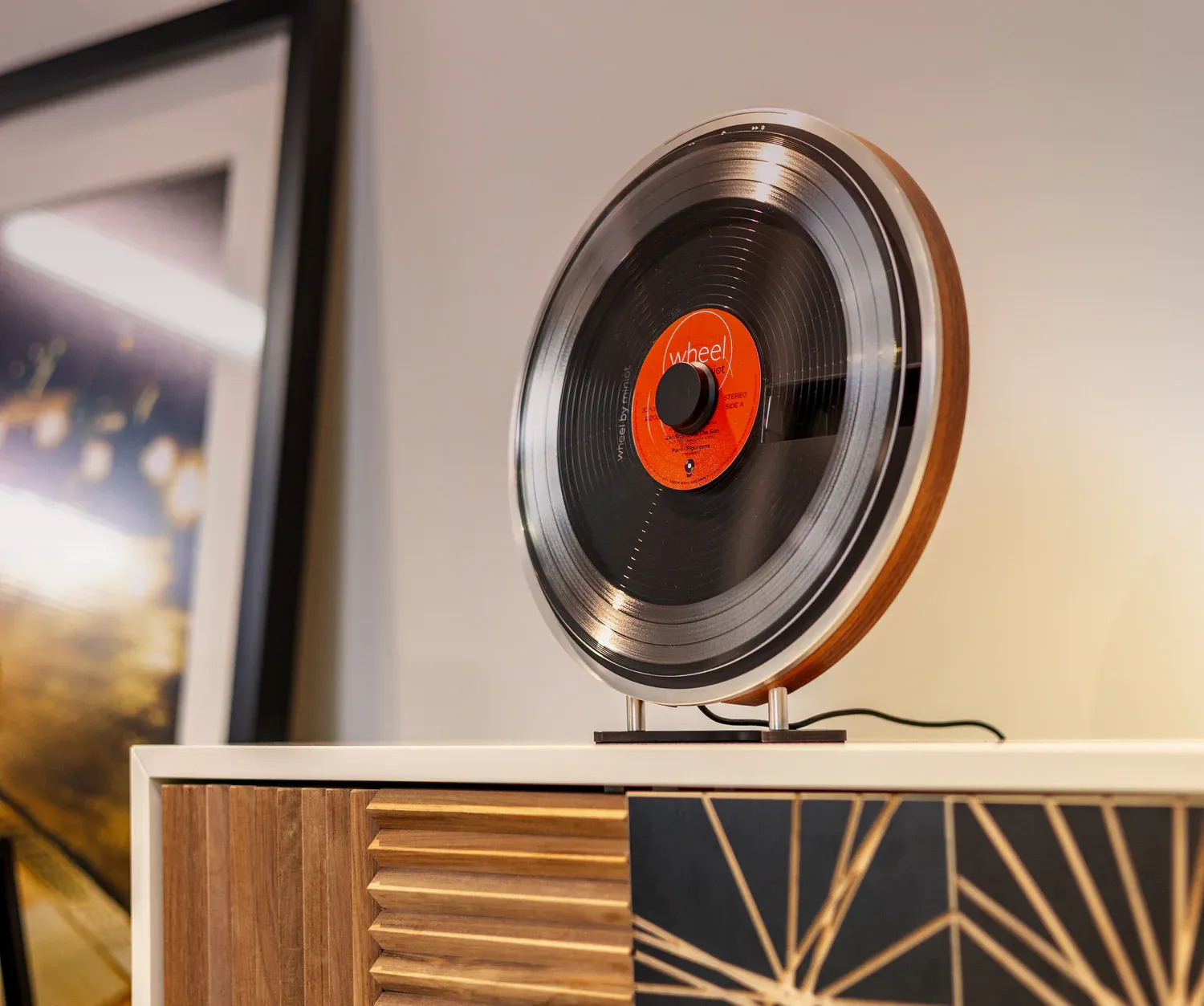
One of the rare attempts to replicate the capabilities of classic turntables comes from Miniot with their Wheel 2. This fully automatic turntable goes a step further by scanning the surface of the record to determine its size, the number of tracks, and their duration. With just a few touches on its sleek interface, you can skip tracks, adjust volume, and more. However, the Wheel 2’s price tag $3,222.00 is well beyond what most hobbyists are willing—or able—to spend.
All photos in this article are sourced from the official websites of the manufacturers mentioned, and all rights to these images belong to them.
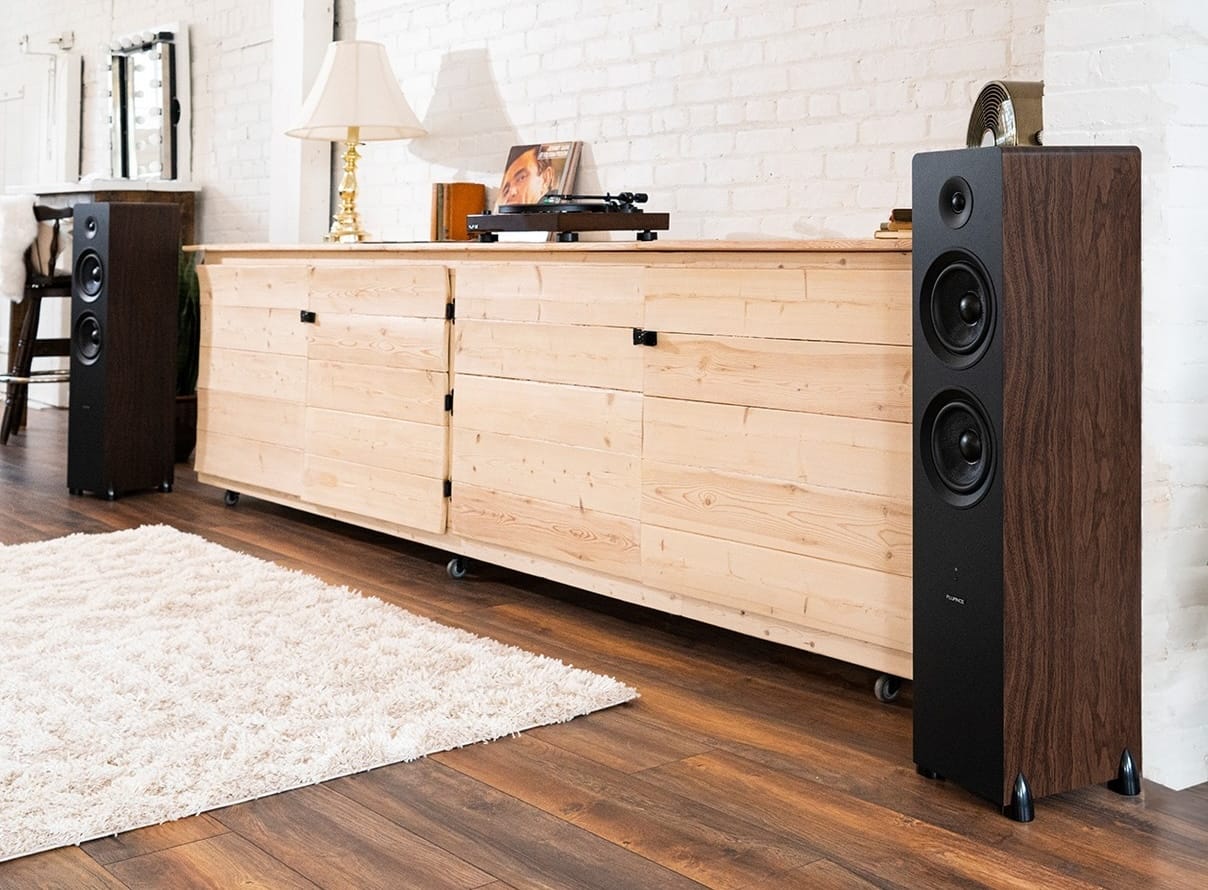
The author’s main system is a Fluance kit that includes a Reference RT85 turntable, a PA10 phono preamp, and Ai81 Elite powered 2-way floorstanding tower speakers. And for the bass, he’s got a DB10 10-inch low-frequency ported front-firing powered subwoofer.